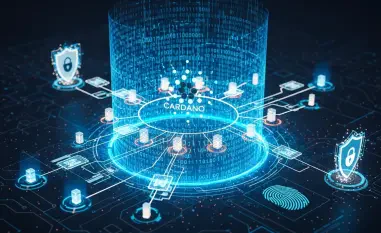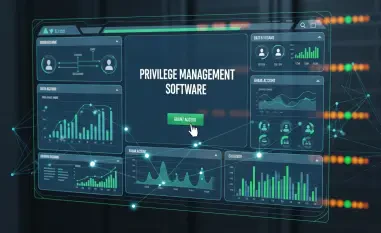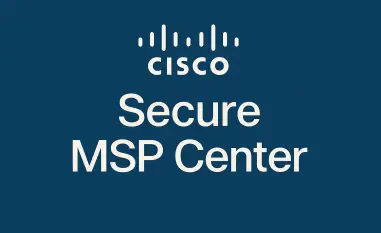Setting the Stage for Industrial Cybersecurity Challenges
In today’s rapidly evolving industrial landscape, a staggering statistic underscores a critical challenge: cyber threats targeting operational technology (OT) networks have surged by over 30% in recent years, putting critical infrastructure at unprecedented risk. As industries embrace digitalization to enhance efficiency, the integration of IT and OT systems has opened new vulnerabilities, exposing production systems to sophisticated attacks that can disrupt operations or compromise safety. This growing menace sets the stage for an urgent need to rethink security strategies in industrial environments.
The current state of the OT security industry reflects a pressing demand for robust solutions amid escalating risks. Industrial operators, managing everything from power grids to manufacturing plants, face the dual burden of maintaining operational continuity while safeguarding against cyber intrusions. Key market players like Siemens are stepping up to address these concerns, driving innovation in a sector where the stakes couldn’t be higher, as downtime or breaches can result in millions in losses or even endanger lives.
With the global OT security market projected to exceed $50 billion by 2030, the scale of investment and focus on cybersecurity is evident. This growth is fueled by the increasing complexity of threats, ranging from ransomware to state-sponsored attacks, which exploit the interconnected nature of modern industrial systems. As digital transformation accelerates, the industry stands at a crossroads, seeking advanced tools to protect vital assets from ever-evolving dangers.
Exploring Innovations and Trends in OT Security
Harnessing Emerging Technologies and Zero Trust Principles
One of the most significant trends reshaping OT security is the convergence of IT and OT systems, a shift that, while boosting efficiency, introduces substantial risks by connecting traditionally isolated industrial networks to external platforms like cloud services. This integration often leaves systems exposed to cyber threats that traditional security measures struggle to counter. The challenge lies in securing these hybrid environments without hindering operational workflows or scalability.
SINEC Secure Connect, developed by Siemens, emerges as a game-changer by leveraging zero trust architecture to mitigate these risks. This platform creates virtual overlay networks that ensure secure connections for Machine-to-Machine, Machine-to-Cloud, and Machine-to-Datacenter interactions, verifying every device and user before granting access. By enforcing strict identity-based controls, it minimizes vulnerabilities that arise from unauthorized access, offering a robust shield for shop floor devices.
A distinguishing feature of this solution is its policy-based approach, which restricts lateral movement within networks, a stark contrast to conventional VPNs that often provide overly broad access. This granular control not only enhances security but also simplifies network management, reducing the administrative burden on industrial operators. Such innovation marks a significant step toward securing increasingly complex industrial ecosystems.
Driving Market Growth and Industry Transformation
The demand for OT security solutions is skyrocketing as cyber threats continue to multiply, with industries recognizing the urgent need to protect critical infrastructure. Market analysis indicates a sharp rise in investments, driven by the necessity to safeguard against disruptions that could cripple operations. This surge reflects a broader acknowledgment of cybersecurity as a cornerstone of industrial resilience.
SINEC Secure Connect enters the market at a pivotal moment, aligning with the push for digitalization and the corresponding need for cutting-edge security measures. Its introduction addresses gaps left by outdated systems, providing a timely response to the challenges posed by interconnected networks. The platform’s ability to adapt to diverse industrial needs positions it as a leader in shaping secure digital transformation.
Looking ahead, platforms like this are poised to redefine industrial cybersecurity by offering scalable solutions that evolve with emerging threats. The focus on adaptability ensures that industries can anticipate and counter risks over the coming years, potentially setting new benchmarks for security standards. This forward-thinking approach could influence market dynamics significantly, encouraging broader adoption of innovative tools.
Tackling Implementation Hurdles in OT Security
Industrial operators often grapple with substantial challenges when deploying OT security measures, particularly due to the administrative complexities involved in managing large, interconnected systems. The integration of IT and OT environments frequently creates vulnerabilities, as disparate technologies and protocols can lead to oversight or misconfigurations. These issues compound the difficulty of maintaining secure and efficient operations.
Traditional security methods, such as VPNs and manually configured firewalls, often fall short in addressing the demands of modern industrial settings. These outdated tools can introduce risks by requiring intricate setups prone to human error, leaving networks susceptible to breaches. The limitations of such approaches highlight the need for streamlined, reliable alternatives that can keep pace with digital advancements.
SINEC Secure Connect offers a compelling solution by simplifying security deployment through outbound-only connections, eliminating the need for complex inbound rules that often lead to mistakes. Its seamless integration with Siemens’ SCALANCE equipment further reduces costs and errors, allowing companies to utilize existing infrastructure effectively. This approach not only enhances protection but also optimizes resource allocation for industrial entities.
Navigating Compliance and Regulatory Demands
The regulatory landscape for industrial cybersecurity is becoming increasingly stringent, with standards like IEC 62443 setting rigorous benchmarks for securing OT environments. These guidelines aim to ensure that industrial systems are fortified against threats, mandating comprehensive security practices across sectors. Compliance with such frameworks is essential for operators to avoid penalties and maintain operational integrity.
SINEC Secure Connect facilitates adherence to these regulations by embedding a zero trust framework that enforces end-to-end encrypted connections. This design inherently aligns with many regulatory requirements, reducing the effort needed to meet compliance obligations. By automating security protocols, the platform helps industries uphold best practices without sacrificing efficiency or innovation.
Beyond immediate compliance, the adoption of such solutions fosters trust within industrial networks by demonstrating a commitment to robust security. This alignment with regulatory expectations can enhance stakeholder confidence, positioning companies as responsible stewards of critical infrastructure. The broader impact lies in cultivating a culture of cybersecurity that prioritizes long-term protection over short-term fixes.
Envisioning the Future of OT Security
The trajectory of OT security points toward a landscape increasingly influenced by innovative platforms that can adapt to dynamic threats. As industries continue to digitalize, the role of solutions like SINEC Secure Connect becomes central to ensuring resilience against cyber risks. The emphasis on forward-looking tools signals a shift away from reactive measures toward proactive defense strategies.
Emerging technologies, including cloud and hybrid deployments, are set to disrupt traditional security models by offering greater flexibility and scalability. These advancements enable industrial systems to operate across diverse environments while maintaining stringent security controls. The potential for such technologies to redefine operational paradigms is immense, paving the way for more integrated and secure industrial networks.
Siemens’ solution stands out with its support for legacy systems alongside modern setups, providing redundancy for high availability and ensuring continuity in critical operations. This versatility addresses future needs by offering a framework that can evolve with technological progress, safeguarding investments in infrastructure. Such adaptability is crucial for industries aiming to build enduring resilience in an era of constant change.
Reflecting on a Transformative Journey in Industrial Cybersecurity
Looking back, the exploration of SINEC Secure Connect highlighted a pivotal shift in how industrial cybersecurity is approached, addressing long-standing vulnerabilities with a zero trust framework that redefined network protection. The journey underscored the platform’s role in simplifying management and reducing costs, providing a blueprint for tackling the complexities of digitalized environments. Its integration capabilities and policy-driven controls stood as testaments to innovation in a field desperate for reliable solutions.
As industries reflected on these advancements, the path forward became clear: investing in adaptable platforms is essential to stay ahead of evolving threats. Operators were encouraged to prioritize solutions that offer scalability and compliance alignment, ensuring both security and operational efficiency. The focus shifted to building partnerships with technology providers to customize defenses for unique industrial challenges.
Ultimately, the legacy of this transformative period is a renewed emphasis on proactive cybersecurity measures. Industrial entities were urged to assess their current systems, identify gaps, and adopt tools that can safeguard critical infrastructure for the long haul. This strategic mindset promises not just protection, but a foundation for sustained growth and stability in an increasingly interconnected world.













